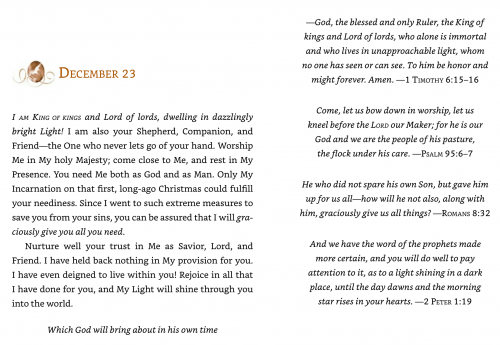Incarnation
An
Essential Presence
Wednesday, December 23,
2020
When we use the language of incarnation, we probably first think of Jesus, and then perhaps of all the rest of creation. No incarnation can take place, however, without a very real feminine presence and polarity. We’ve forgotten that reality for far too long, which is why we are witnessing such an immense longing for relational, mutually empowering feminine qualities at every level of our society. Left primarily in the hands of men for most of history, our politics, our economics, our psyches, our cultures, our patterns of leadership, and our theologies have all become far too warlike, competitive, individualistic, mechanistic, and non-contemplative. A simple return to the Hebrew Scriptures brings us in touch with the feminine, co-creative Spirit of God, also called Sophia (Greek for Wisdom).
When God fixed the foundations of earth, then was I [Sophia] beside God as artisan; I was God’s delight day by day, playing before God all the while, playing over the whole of God’s earth. (Proverbs 8:29–31)
As scholar Christopher Pramuk writes, “Sophia is the eros of God become one with all creation, the love in God that longs for incarnation from before the beginning. She is the co-creativity of God, always inviting, never compelling, coming to birth in us when we say yes to [what Thomas Merton calls] “the dawning of divine light in the stillness of our hearts.” [1] [2]
My friend Mirabai Starr writes about Sophia’s role in incarnation, as taught by the medieval mystic Hildegard of Bingen (1098–1179):
Hildegard of Bingen . . . showed [Mother Earth] to us through the church-approved lens of Mother Mary and Mother Sophia. . . . According to Hildegard, it is Mary who spins earthly matter into being and weaves it together with the heavens so that all of creation is interpenetrated with the sacred. In Hildegard’s theology, Mary merges with Sophia, Mother Wisdom, who dips one wing to earth while the other soars to heaven and, in her ecstatic flight, quickens life. . .
Hildegard was smitten with the creator and enamored by every element of creation. Her mysticism is intimate—erotic, even. She coined the term viriditas to evoke the lush, extravagant, moist, and verdant quality of the Divine, manifesting as the “greening power” that permeates all that is [i.e., the spirit within all matter]. This life-giving energy is imbued with a distinctly feminine quality.
The earth is at the same time mother,
she is mother of all that is natural,
mother of all that is human.
She is the mother of all,
for contained in her are the seeds of all. [3] For Hildegard, the Son may be the incarnation of the Holy One, but the Mother forms the very stuff from which the Word of God issues forth into the world. The mystical heart of all the world’s religions affirms the profoundly feminine understanding of panentheism: that is, all the particles of the universe are infused with the substance of the Divine; God both interpenetrates the universe and is greater than all that is.
